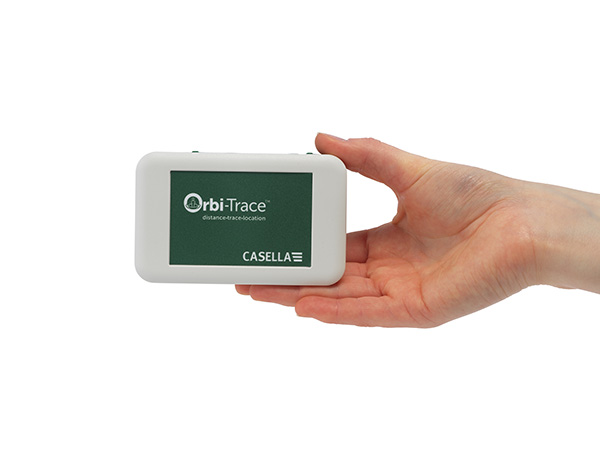Casella UK
Wolseley Rd, Kempston,Bedford MK42 7JY
+44(0)1234844100
info@casellasolutions.com

There is a plethora of social distancing technology out there now, aimed primarily at workplaces that have to have a certain amount of workforce in attendance, such as in manufacturing and the construction sectors. Many of these use wearable devices that provide new buying options with features that may be unfamiliar, so lets look at some of these technologies, features, and how they may benefit workplaces in this challenging environment of social distancing.
Ultrawideband technology is at least 50 times more accurate than its nearest Bluetooth technology and has become the leading technology for social distancing tags. Avoiding the technicalities, UWB allows changes in distance to be monitored quickly. This means that as social distance is breached, alerts are instant to the wearer. Another benefit is UWB doesn’t take a lot of power, meaning its ideal for wearable technology and won’t run out of charge in the day.
It’s often the case that the safe distance is configurable, which might be appealing to be set depending on local guidance or in accordance for best practice in your own workplace.
You can get social distancing tags that just measure the distance between individuals wearing them and alert when social distance is breached. That’s perfect if you are after a social distancing tool to keep people apart. But infection risk is a function of distance and the time a person too close. Therefore, having a tag that stores the interaction time and distance, and subsequently allows the analysis of that data, means that decisions can be made based on transmission risk. It could mean that if infections get in the workplace, it need only affect those with significantrisk, not entire workforces.
It goes without saying, if you are storing data on a device that is worn, then individuals wearing those tags might be concerned with what it is storing. These tags are not so ‘Big Brother’ that they are storing audio or video of course, but some can store where you are, depending on their sophistication. Therefore, in considering privacy, having a tag for social distancing where the data is not stored for a long period of time may be a consideration. Look for a tag that only keeps data for a maximum of 14 days, which is more than viral transmission and incubation times.
If the tags are storing the amount of time and distance they are in proximity to other tags, then there is a benefit to analysing that data. Of course, you will need a tag capable of offloading the data to some appropriate software. If you have a lot of employees, this will need to happen automatically, so it’s not time prohibitive. Devices can do this overnight if they have the right wireless technology inside them, so select a tag that can download via Bluetooth or another technology.
Then the data can be analysed, where a system can take all of this distance and time information and produce some informative, visual data. Its not going to be possible to spend hours analysing this data every day, as that will be impossible without affecting someone’s day job. Look for a system that can produce visual maps and risk percentages for individuals automatically. By knowing those people who are too close for too long, and therefore high risk, you can help manage the situation. This might be by rearranging a workplace, putting up dividers, or simply talking to those involved to see what can be improved.
Some social distancing tag systems have sophisticated software, giving detailed risk analysis, so if someone becomes infected, it may not mean isolating whole workforces. This could be a massive financial benefit and ensure a return on the investment of a social distancing system.
Social distancing systems are going to be around for a while yet, but anyone in procurement will likely want to know what the long term benefit is, what happens to the system after COVID? The answer to this may well be in Real Time Location Systems (RTLS), and how that can provide a return on investment (ROI) for the future. With additional infrastructure, typically wall mounted devices, social distancing tags can then know their exact position all the time. There are lots of use cases for this, including productivity and lean manufacturing which by giving small percentage improvements can generate thousands to a business’s bottom line. Excluding people from certain zones can be a huge benefit for safety and security aspects, as well as keeping people away from hazards such as moving vehicles, which can reduce risk within a workplace. Quantifying these potential cost savings can easily justify a modest investment in a social distancing system that can be upgraded to RTLS.
Social distancing tags use the latest technology not just in monitoring the space between individuals, but in how data is used and analysed to provide tangible cost savings, not just for the present pandemic, but for a system that can be used in a future, safer, more productive workplace.